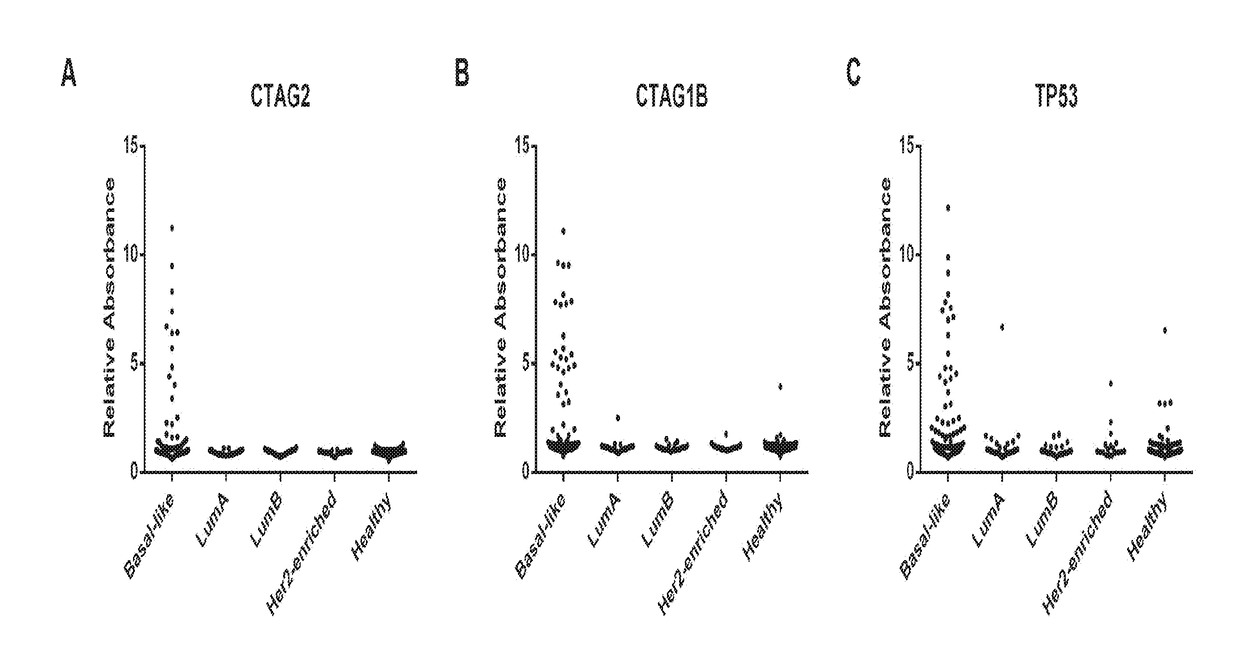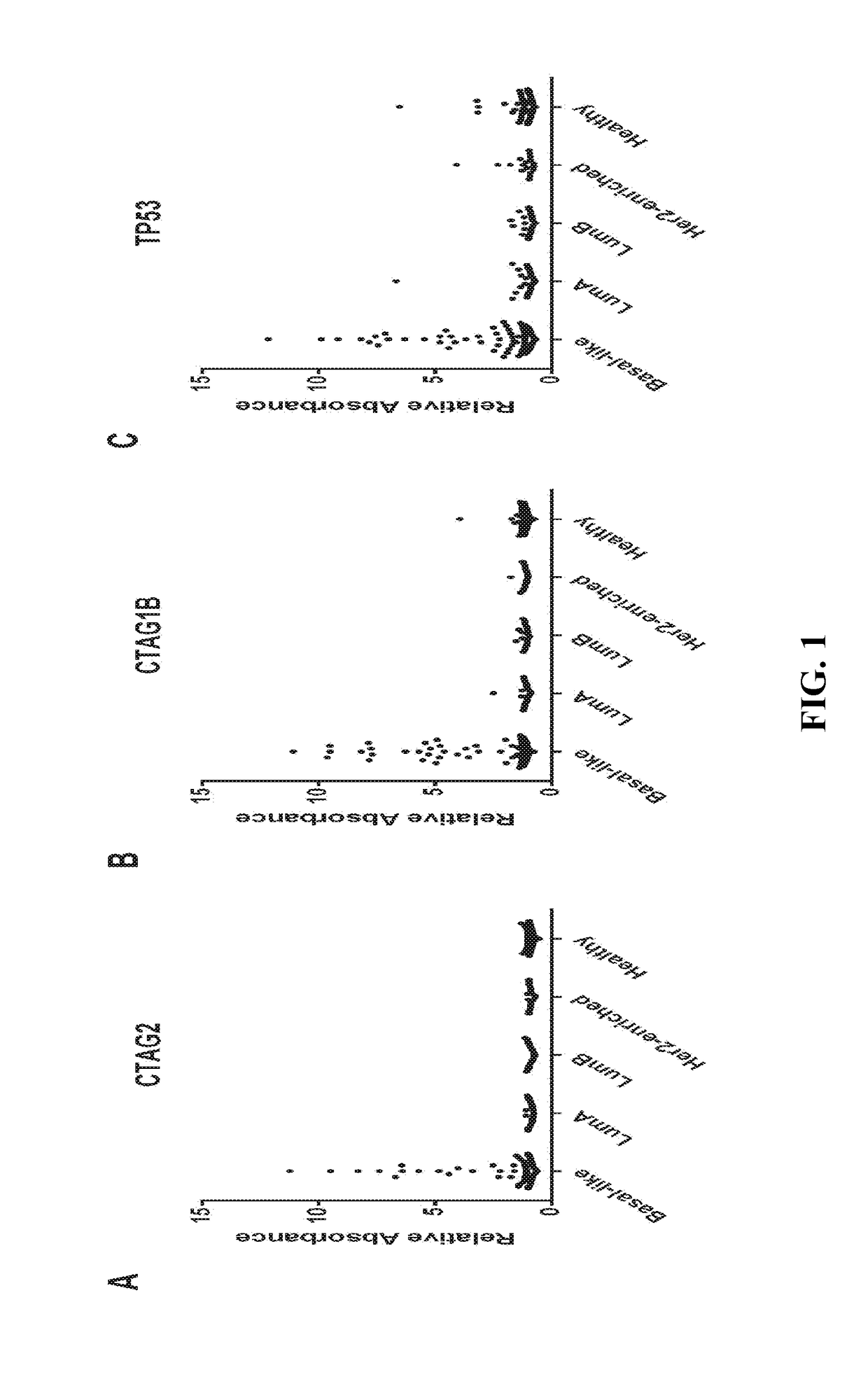Plasma autoantibody biomarkers for basal like breast cancer
a breast cancer and autoantibody technology, applied in the field of breast cancer biomarkers, can solve the problems of low proliferation rate, low detection efficiency, and limited detection range of basal-like subtype cancers by current screening mammography
- Summary
- Abstract
- Description
- Claims
- Application Information
AI Technical Summary
Benefits of technology
Problems solved by technology
Method used
Image
Examples
Embodiment Construction
[0011]Notably, the sensitivity of a subtype-specific biomarker can never be higher than the prevalence of that subtype in the population where it is tested. The ability to find biomarkers for cancer detection with high sensitivities has likely been impaired by this effect. This is especially true for disease subtypes that are less common in the overall population. Basal like breast cancer is a breast cancer subtype with aggressive disease progression and poor prognosis. It overlaps significantly with triple negative breast cancer (TNBC), a clinical pathological subtype characterized by negative tissue staining of estrogen receptor (ER), progesterone receptor (PR), and the absence of human epidermal growth factor receptor 2 (HER2) amplification.
[0012]TNBC is associated with African American ethnicity, younger age, advanced stage at diagnosis and poorer outcomes. However, TNBC itself has been found to be molecularly heterogeneous in two recent studies. Among patients with TNBC, a core...
PUM
| Property | Measurement | Unit |
|---|---|---|
| Fraction | aaaaa | aaaaa |
| Fraction | aaaaa | aaaaa |
| Sensitivity | aaaaa | aaaaa |
Abstract
Description
Claims
Application Information
 Login to View More
Login to View More - R&D
- Intellectual Property
- Life Sciences
- Materials
- Tech Scout
- Unparalleled Data Quality
- Higher Quality Content
- 60% Fewer Hallucinations
Browse by: Latest US Patents, China's latest patents, Technical Efficacy Thesaurus, Application Domain, Technology Topic, Popular Technical Reports.
© 2025 PatSnap. All rights reserved.Legal|Privacy policy|Modern Slavery Act Transparency Statement|Sitemap|About US| Contact US: help@patsnap.com


